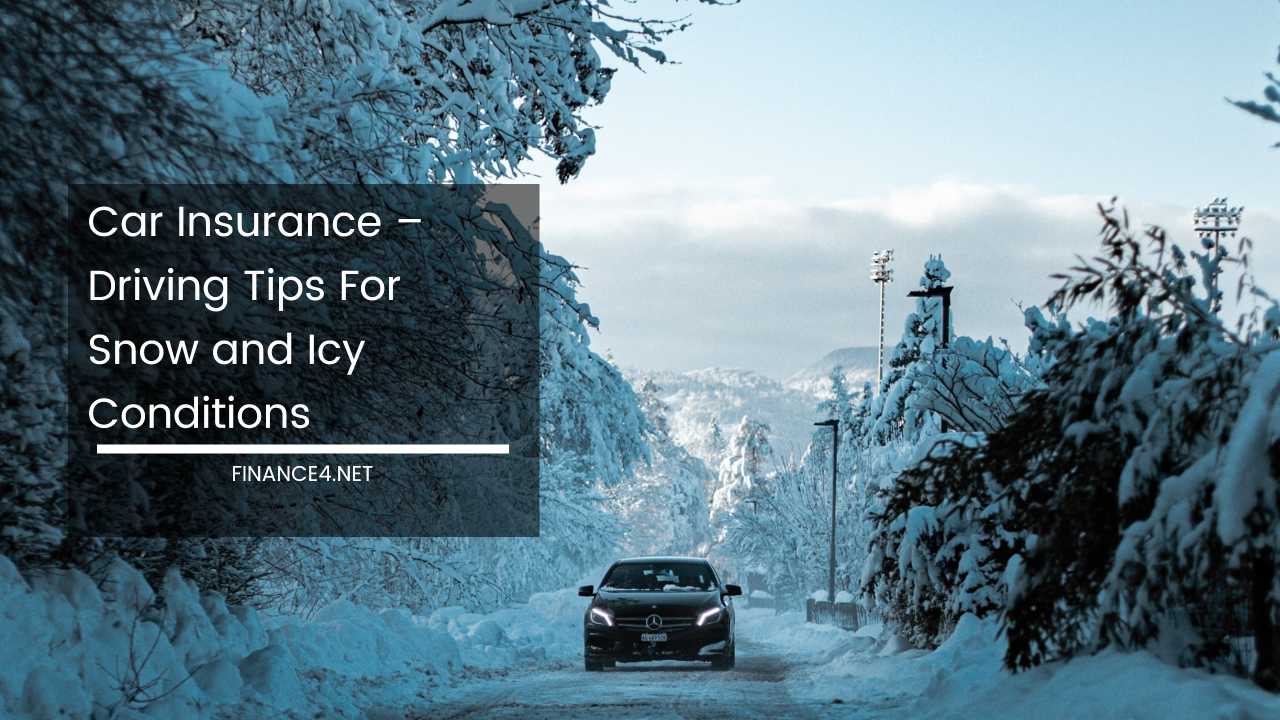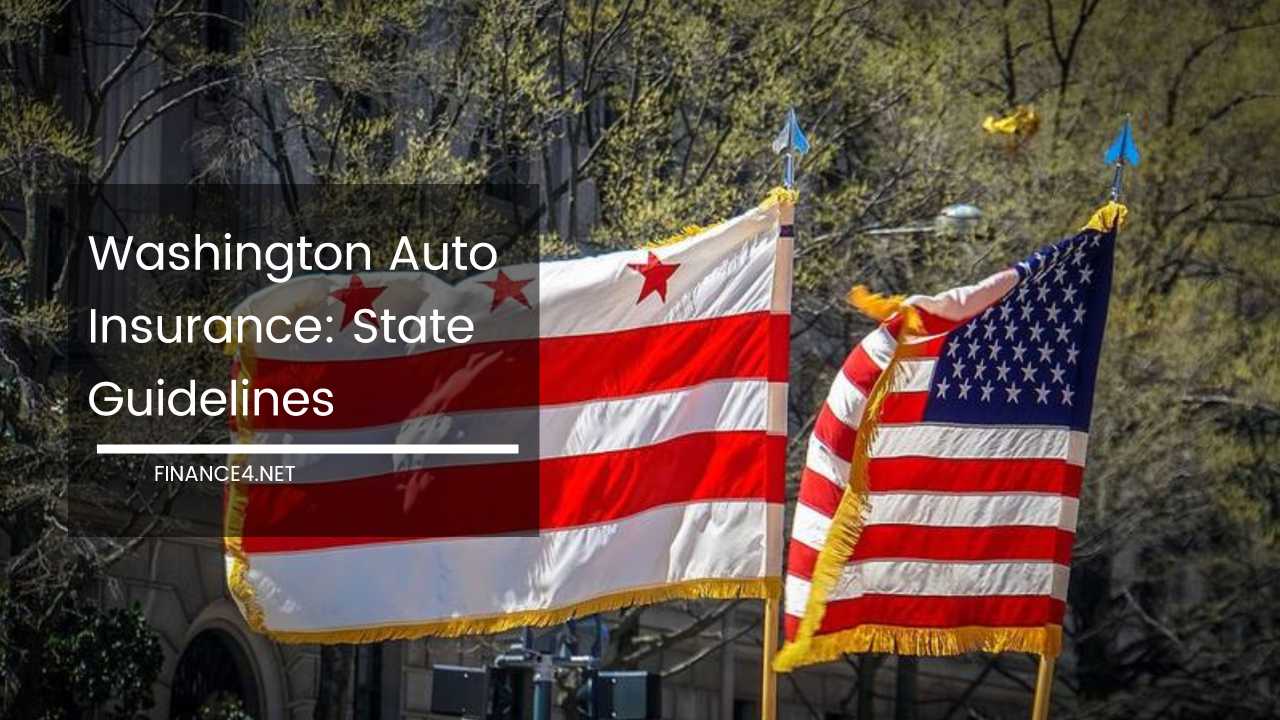Car Insurance – Driving Tips For Snow and Icy Conditions

Winter’s beauty can be deceiving. While a fresh snowfall creates a magical wonderland, it also transforms roads into treacherous landscapes. Driving in these conditions requires a shift in mindset and adjustments to your usual habits.
This guide equips you with the knowledge and essential tips to navigate snowy and icy roads with confidence, minimizing the risk of accidents and keeping your wallet safe from unexpected car insurance claims.
Planning for Winter Woes
- Be Weather Wise: Don’t be caught off guard by a snowstorm. Regularly monitor weather forecasts and road condition reports from reliable sources like the National Weather Service or your local Department of Transportation. Utilize mobile apps that provide real-time updates on weather and road closures. If a blizzard is brewing, consider postponing your trip until conditions improve. Prioritize safety over convenience.
- Official Warnings Matter: Pay close attention to official weather warnings and advisories issued by local authorities. These alerts often highlight areas with particularly hazardous conditions, like black ice patches or whiteouts (sudden near-zero visibility due to snowfall). Understanding these risks can help you make informed decisions about travel.
- Assess Your Trip: Evaluate the urgency of your travel needs. Can the trip be delayed until after the storm passes? Every unnecessary journey on snow-covered roads increases the risk of accidents. If you must travel, consider alternative routes that might be less affected by the weather. Public transportation or carpooling can also be safer options during winter storms.
Understanding the Enemy: Snow and Ice
- Black Ice Deception: Ice doesn’t always announce its presence with a frosty sheen. Be especially cautious of “black ice,” a nearly invisible layer that forms on roads when temperatures hover around freezing. This treacherous enemy significantly reduces tire traction, and unsuspecting drivers can lose control in an instant. Dawn and early mornings are prime times for black ice to form, so be extra vigilant during these periods.
- Reduced Traction Woes: Snow and ice act like a lubricant between your tires and the road, significantly reducing traction. This translates to longer stopping distances and a higher risk of skidding. Be prepared to adjust your driving style accordingly. Remember, the laws of physics apply differently on winter roads. What might be a safe following distance on dry pavement can be disastrous on snow and ice.
Equipping Your Car for Winter
- Full Tank Advantage: Maintaining a full gas tank throughout your winter journeys offers a two-fold benefit. It provides added weight for better vehicle stability on slippery roads. Additionally, a full tank ensures you don’t run out of fuel if stranded during a storm, a situation that can quickly turn dangerous.
- Winter Emergency Kit: Assemble a winter emergency kit specifically designed for harsh weather conditions. Store this kit readily accessible in the passenger compartment, not the trunk, which might be inaccessible if your car becomes stuck. Here are some essential items to include:
- Snow Chains: Learn how to properly install and use snow chains on your tires according to your car’s manufacturer recommendations. Remember to carry the mandatory signaling devices required when using chains.
- Mobile Lifeline: Pack a fully charged mobile phone and a car charger in case you need to call for help. Consider a portable phone charger for extended emergencies.
- Survival Supplies: Include non-perishable food items with a long shelf life and bottled water to sustain yourself if you become stranded. Pack high-calorie options that will generate heat for your body.
- Warm Clothing and Footwear: Pack warm clothes and waterproof boots suitable for snowy conditions. Hypothermia can set in quickly in cold weather, so layers are essential. Don’t forget gloves, a hat, and a scarf.
- Visibility Essentials: High-visibility vests and emergency flares will enhance your roadside visibility in case of an emergency. Consider reflective triangles as well.
- First-Aid Kit: A basic first-aid kit can be helpful for minor injuries that might occur while stranded.
- Winterize Your Vehicle:
- Engine Coolant: Ensure your antifreeze and coolant levels are sufficient to prevent engine freezing in cold temperatures. Consult your car’s owner’s manual for the recommended coolant mixture for your specific climate.
- Tire Pressure Check: Slightly adjust your tire pressure according to the manufacturer’s recommendations for winter driving. This increases the contact surface area of the tires with the road, improving traction. Don’t forget to check the spare tire pressure as well.
- Clear Visibility: Inspect your windshield wiper blades for wear and tear. Ensure the defrosting mechanisms and windshield washer fluid reservoir are functioning properly to maintain clear visibility during your journey.
Mastering winter driving techniques is crucial for safe navigation on snow-covered roads. Here are some key practices to adopt:
-
Slow and Steady Wins the Race: The golden rule of winter driving is to adjust your speed significantly below the posted limit. Stopping distances are considerably longer on snow and ice. Maintain a slow and steady pace that allows ample reaction time in case of unforeseen hazards. Double or even triple the following distance you would normally maintain on dry pavement.
-
Gentle Braking is Key: Harsh braking is the enemy of winter driving. Slamming on the brakes can lock your wheels and cause the car to skid. Apply the brakes gently and progressively with a pumping motion to maintain control of the vehicle. If your car has Anti-lock Braking System (ABS), press the pedal firmly and let the system do its job by modulating brake pressure to prevent wheel lockup.
-
Steering Out of Trouble: If your car starts to skid, stay calm and avoid slamming on the brakes. This will only worsen the situation. Remember, the key is to regain control of the direction of the car. Take your foot off the accelerator and steer smoothly in the direction you want the front wheels to go. Gradually release the accelerator as the car straightens out. Never jerk the steering wheel or overcorrect, as this can lead to a spinout.
-
Low Gear Advantage: When possible, use low gears (second gear or reverse) to navigate uphill sections or maintain control on slippery roads. This technique helps prevent getting stuck by providing better engine control and minimizing wheel spin.
-
Increase Following Distance: Maintain a significantly larger following distance than usual to account for longer stopping distances and the possibility of the car ahead skidding. Be extra cautious around large vehicles like trucks, which can create downdrafts and reduce visibility due to snow spray.
Improving Visibility for Safe Driving
-
The “Potato Trick”: This unconventional life hack involves rubbing a halved potato on the interior and exterior of your car windows. The starchy residue is believed to help prevent ice formation on the glass. While the scientific evidence for its effectiveness is debatable, it’s a harmless trick you can try.
-
Defrosting and Demisting: Direct warm air vents towards the windshield and windows to prevent fogging and ensure clear visibility. Utilize the heated rear window function and side mirror defrosters if available. Keep a scraper and de-icing spray handy to remove any ice buildup on the exterior of the windows.
-
Headlights On: Turn on your headlights, even during daytime, to improve your visibility and be seen by other drivers. Consider using fog lights if conditions warrant them.
If You Get Stuck in Snow
-
Contact Emergency Services: If you become stuck in the snow, contact emergency services via your mobile phone, indicating your location precisely. This is especially important if you’re on a deserted road.
-
Stay Warm: Run the engine periodically with the heater on to maintain cabin temperature. Ensure the exhaust pipe is clear of snow to prevent carbon monoxide poisoning. Crack the windows open slightly for ventilation to avoid carbon monoxide build-up.
-
Information and Patience: Use your phone and radio to stay updated on weather conditions and road closures. Ration your food, water, and fuel while waiting for help. Staying calm and conserving resources is crucial until help arrives.
Car Insurance and Winter Driving
While winter driving can increase the risk of accidents, it’s important to remember that most comprehensive car insurance policies will cover damage caused by collisions or winter weather events like snow and ice.
However, certain limitations or deductibles might apply. Review your car insurance policy and discuss winter driving concerns with your insurance agent to ensure you have adequate coverage.
By following these tips, staying informed about weather conditions, and adapting your driving style to winter road conditions, you can significantly reduce the risk of accidents and navigate the snowy season safely. Remember, winter driving requires extra caution, preparation, and a healthy dose of respect for the power of Mother Nature.



